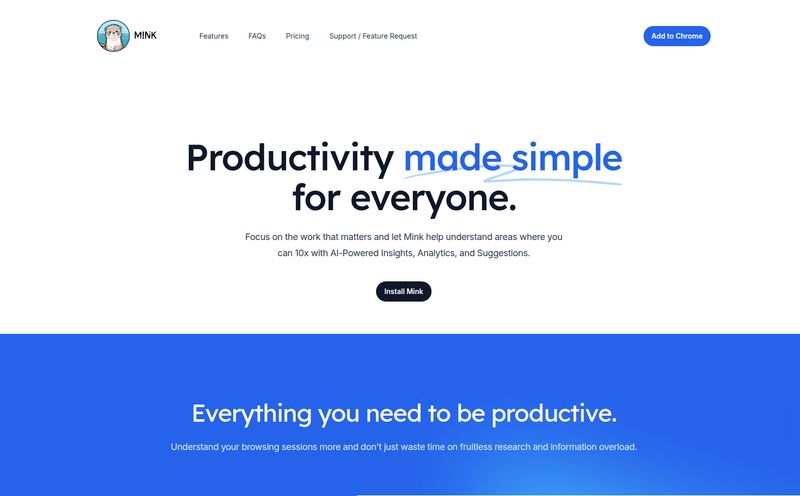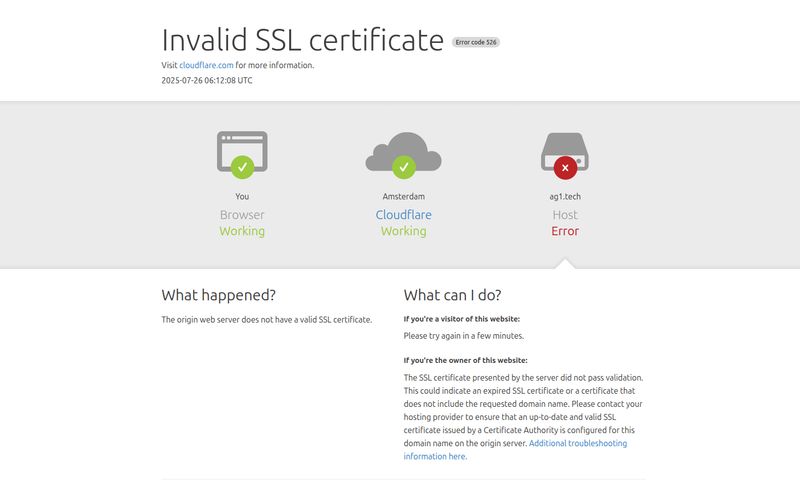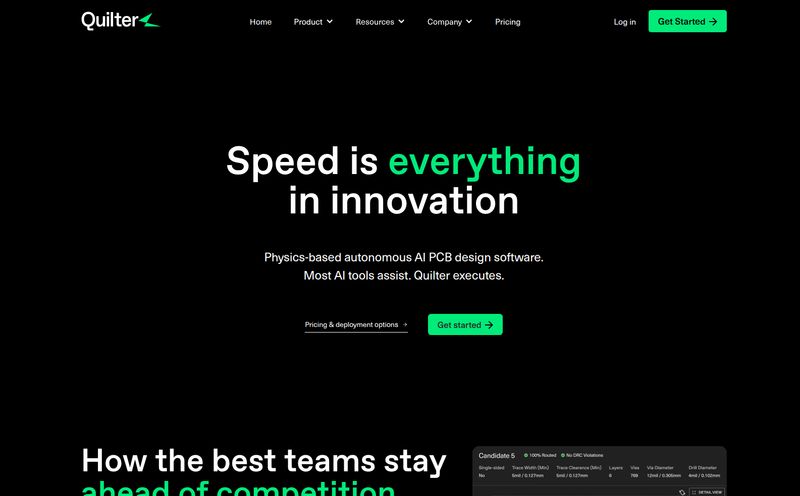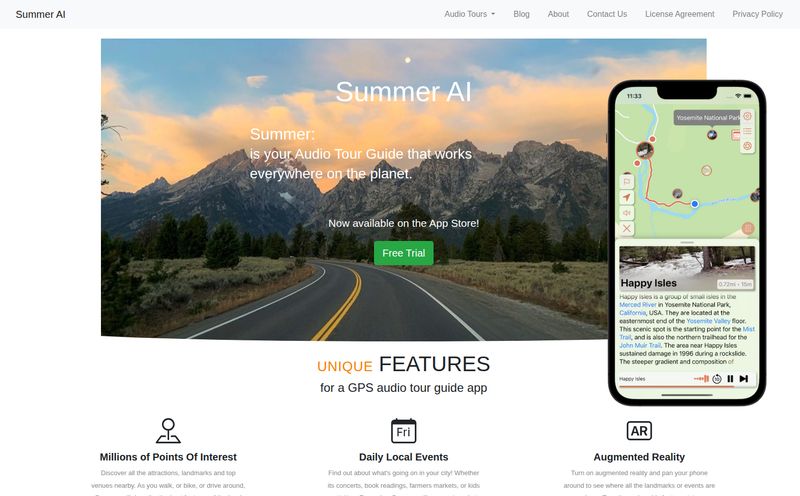How many project management tools have you tried in your career? Five? Ten? If you're anything like me, you've cycled through more PM platforms than you can count on both hands. I’ve seen them all. Asana. Trello. Jira. Monday.com. They all promise a productivity utopia, a world where every task is tracked, every deadline is met, and every project flows like a gentle stream. And yet, here we are, still drowning in notifications, still attending meetings about the meetings, and still feeling like we’re just... ticking boxes.
The dirty little secret of the productivity world is that most tools don't solve the core problem. They just give us a more organized way to feel overwhelmed. We spend so much time managing the work that we forget why we're even doing it.
So when I stumbled across a new tool called Ralify, my initial reaction was, admittedly, a healthy dose of skepticism. Another one? Really? But then I saw their pitch, and it wasn't about more features, better Gantt charts, or prettier Kanban boards. It was about something different. It was a pitch to get rid of the task list altogether. And I have to say, that got my attention.
What Exactly is Ralify, Anyway?
This is where it gets interesting. Ralify doesn't call itself a project management system. It calls itself a leadership tool. That’s a deliberate and important distinction. It’s designed for founders and fast-paced teams who are frankly sick of the hassle of creating, assigning, and micromanaging individual tasks.
Instead of a task-based system, Ralify introduces what it calls a “proven goal-driven process.” Think of it like this: traditional PM tools are like giving your team a giant pile of bricks, lumber, and nails and saying, “get to work.” It's a list of components. Ralify, on the other hand, is about showing everyone the architectural blueprint of the finished house first. The goal isn't to stack bricks; the goal is to build a home. The focus is on the outcome, not the granular outputs.
This shift from “what are you doing?” to “what are we achieving?” is, in my opinion, a massive leap. It reframes the entire conversation around work. It's less about surveillance and more about alignment. And for any founder or team lead trying to keep a talented group of people moving in the same direction, alignment is everything.
Ditching the Tyranny of the To-Do List
I once worked on a marketing campaign where our project manager was obsessed with Asana. Every single tiny action had to be a sub-task of a sub-task. “Draft tweet copy.” “Get tweet copy approved.” “Schedule tweet.” “Confirm tweet was posted.” We spent, and I am not exaggerating, at least an hour a day just updating our tasks. Morale plummeted. We felt like cogs in a machine, our creativity stifled by an endless checklist. We completely lost sight of the actual goal: to run a campaign that people loved.
This is the tyranny I’m talking about. It’s the illusion of productivity. Your task list might be empty at the end of teh day, but did you actually move the needle? Did you make a difference? Or did you just get very, very good at checking boxes?
Ralify seems to be built by people who have lived through that exact kind of project hell. By removing the focus on atomized tasks, they're attempting to solve a deeper, more human problem. The goal is to free up mental energy. Instead of your brain being cluttered with a dozen minor to-dos, you can focus your best thinking on the big picture. How do we achieve this quarter's sales target? That’s a much more powerful question than, Have I updated my ticket in Jira today?
How Ralify Aims to Boost Productivity and Morale
So, the philosophy sounds great. But how does it translate into actual results? Based on their approach, the benefits seem to cluster around two key areas.
A Focus on the 'Why', Not Just the 'What'
When your team's work is framed by goals, something magical happens. People start to understand how their individual contribution connects to the company's mission. A software engineer isn't just “closing a ticket”; they're “improving user onboarding to reduce churn by 5%.” A content writer isn't just “writing a blog post”; they're “building our authority in the market to attract higher-quality leads.”

Visit Ralify
This connection is a huge driver of intrinsic motivation and, consequently, team morale. As the great Simon Sinek taught us, you have to “Start with Why.” People who believe in the mission work harder, are more creative, and are more resilient when things get tough. A goal-driven process bakes this 'why' into the daily workflow. It's no longer something you just talk about in a quarterly all-hands meeting; it's the very lens through which you see your work.
Built for Speed, Without the Burnout
The tagline “designed for fast-paced teams” might sound like a recipe for burnout, but I think it’s the opposite. The administrative overhead of traditional PM tools is a massive time-suck. It’s friction. It slows you down. By simplifying—or eliminating—that layer of management, you’re not asking people to work more, you’re enabling them to achieve more in the same amount of time.
This is about creating flow. It’s about letting your team get in the zone and do the deep work that actually matters, instead of constantly being pulled out by pings and status update requests. For a startup or a small, agile team, this speed and focus can be a life-or-death competitive advantage.
Who Is Ralify Actually For? (And Who Should Probably Skip It)
No tool is for everyone. Let's be brutally honest here. If your team loves a highly structured, granular, task-based system—and some do!—Ralify is probably not for you. If you work in a large corporation with complex compliance or reporting requirements that demand meticulous task tracking, this might be a tough sell to the higher-ups.
But if you’re a founder, a product lead, or the head of a small, empowered team, you are the bullseye of Ralify's target audience. You're likely someone who values autonomy and trusts your team to figure out the 'how' as long as the 'what' and 'why' are clear. You're tired of being a project manager and want to be a leader.
I see this being a great fit for:
- Early-stage startups: Where speed and alignment are paramount.
- Creative agencies: Focusing on campaign goals rather than a million tiny deliverables.
- Product development teams: Who operate with OKRs (Objectives and Key Results) or similar goal-setting frameworks.
- Any leader who believes in outcomes over output.
The Big Question: What About Features and Pricing?
Okay, here’s where we have to address the elephant in the room. Right now, there is limited public information on the specific nuts-and-bolts features of Ralify. Their website is sleek and minimalist, focusing on the philosophy more than a feature checklist. And a public pricing page? Doesn't exist yet.
Now, my cynical side could see this as a red flag. But my experienced side sees it differently. This is very common for new, disruptive tools in an early-access or beta phase. They are likely refining the product with a select group of early adopters before a big public launch. They’re building a movement, not just shipping software.
The lack of a price tag suggests they might be in a phase of gathering feedback or offering custom onboarding for founding teams. My advice? Don't let the mystery scare you off. If the philosophy resonates with you, the best thing to do is head to their site and sign up for the waitlist or request a demo. Be one of the first to see it. There’s a certain thrill to that, isn't there?
My Final Take: Is Ralify Worth a Look?
In a sea of sameness, Ralify is a bold, opinionated take on how modern teams should work. It's a bet. A bet that we're ready to graduate from the digital checklist and embrace a more mature, empowering way of collaborating. It’s a bet that trust and alignment are more powerful motivators than oversight and reporting.
I, for one, am excited to see where it goes. The world doesn't need another Jira clone. It just might need a tool that helps us remember the whole point of our work in the first place. For any leader looking to save time, boost real productivity, and build a team that's genuinely fired up to come to work, Ralify is, at the very least, worth a very close look.
Frequently Asked Questions about Ralify
- What makes Ralify different from tools like Asana or Trello?
- The main difference is the core philosophy. Asana and Trello are primarily task-based, organizing work around to-do lists and cards. Ralify is goal-driven, focusing the team on achieving larger objectives first and trusting them to handle the specific actions needed to get there. It's about the 'why' over the 'what'.
- Is Ralify just a project management tool?
- Not exactly. It bills itself as a 'leadership tool.' While it helps manage work, its primary purpose is to align the team, boost morale, and increase productivity by focusing on high-level goals, which are functions of leadership, not just management.
- Who is the ideal user for Ralify?
- The ideal user is a founder, team lead, or manager of a fast-paced, agile team. It’s for leaders who prefer to give their teams autonomy and focus on outcomes rather than micromanaging daily tasks.
- How does Ralify improve team morale?
- By connecting daily work to larger company goals, it helps team members see the impact and purpose of their contributions. This sense of purpose is a powerful motivator and morale booster, preventing the feeling of being a 'cog in a machine'.
- How much does Ralify cost?
- Currently, there is no public pricing information available for Ralify. This is common for new tools in an early-access or beta stage. The best way to find out about pricing or access is to visit their official website and sign up.
- Can I use Ralify for personal task management?
- While you probably could, it's not designed for that. Its core strengths are in team alignment and leadership. For personal to-dos, a simpler checklist app would likely be more suitable. Ralify's power is in its collaborative, goal-oriented approach for teams.
Conclusion
We’ve been stuck in the same productivity paradigm for over a decade. We've optimized the checklist to death. Ralify represents a potential shift in thinking. It’s a compelling argument that maybe, just maybe, the secret to getting more done isn't better task management, but a clearer, shared sense of purpose. It’s a refreshing idea, and one that I think many leaders are more than ready to embrace.
Reference and Sources
- Official Website: A direct link to Ralify's homepage would be cited here (e.g., www.ralify.com).
- Sinek, S. (2009). Start with Why: How Great Leaders Inspire Everyone to Take Action. An influential book on purpose-driven leadership.
- Harvard Business Review (hbr.org): For articles on goal-setting theory, OKRs, and employee motivation.



